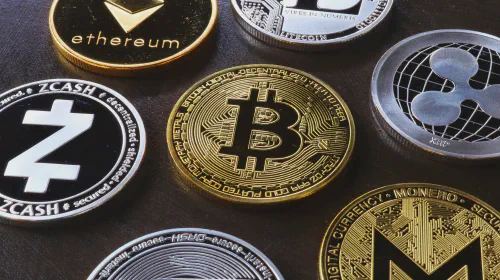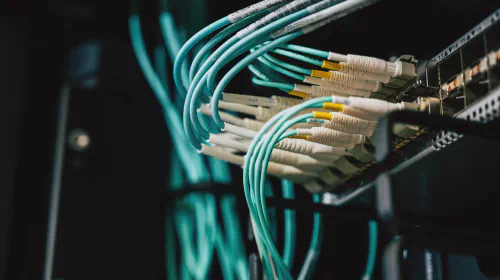Blockchain Confirmations: Understanding Their Importance
Salomon Kisters
Jun 1, 2022This post may contain affiliate links. If you use these links to buy something we may earn a commission. Thanks!
When you make a regular money transfer via banks using fiat currencies, you are given a transaction receipt. This receipt serves as proof that the transfer was made legitimately and is completed. Hence, it gives satisfaction to both parties and removes any doubts that the transaction did not go through or if any error occurred in the process.
But what happens in blockchain, the decentralized finance system with no banks to start with? How do users ensure the completion of their transactions? That’s what brings us to the topic of discussion in this article, i.e., blockchain confirmation.
How are Transactions Processed on Blockchains?
To fully grasp the idea of blockchain confirmation, we must revise our knowledge about the basic blockchain working.
When you make a transaction request, the funds are not transferred instantly. In fact, in the case of proof of work blockchains (Bitcoin, Litecoin, etc.), numerous nodes (miners) across the network are constantly racing against each other to solve a highly complex cryptographic algorithm.
The miner to have the code solved first is selected as the validator of the next block. That’s when your transaction request is picked and dealt with. The validator records a number of transactions on the block under construction.
As soon as the block is filled with data, it is closed and added to the blockchain. After completing the block, all the transactions recorded onto it are considered completed. Miners use expensive computing devices that consume massive amounts of energy in the process. So, you have to incentivize them by giving them a transaction fee with each transaction you make.
However, when it comes to proof of stake blockchains (Cardano, Solana, Polkadot, etc.), the miners are replaced with stakers. Participants of the network lock their holdings on the blockchain to earn a chance to be selected as validators.
After the blockchain randomly chooses one among the candidates to verify the transactions, the rest of the procedure is more or less similar to the proof of work blockchains. The expenses are less at the validator’s end, but you still have to pay a small transaction fee.
What are Blockchain Confirmations?
As we just discussed, transactions on blockchains are not executed as soon as you make the request. You have to wait until the block is completed, locked, and added to the chain. Until then, your transaction is not considered immutable and can be reversed. However, even the completion of just one block is not enough to ensure the permanence of a transaction.
Sometimes, when miners are racing against each other to break the cryptographic code, two or more miners reach the solution simultaneously. So, all of them are selected as validators for the time being, and each mines his or her own block. All these blocks are then added as extended branches of the most recent block.
The network then waits for the next few blocks. Once a certain number of blocks have been added, the length of each of the extended branch chains is observed. Only the chain with the longest length is kept, and the rest of the branch chains are discarded. All the transactions recorded in the discarded blocks are reversed, and users are returned their funds as if they were never transferred.
Users have to wait until more newly mined blocks are added next to the block containing their transaction records. Each attached block will be counted as one blockchain confirmation. The more confirmations a transaction has, the lesser its chances of being reversed, and the more secure it will be.
Apart from being immutable now, transactions with larger confirmation numbers are also safe from hacking attacks. This is because all blocks are connected in a chronological sequence. In this way, every block on the blockchain is essentially a succession to the one before it.
And when the attacker tries to breach into one block to modify the recorded data, they have to hack not just one but all the blocks coming after it. So, a transaction with, let’s say, 30 confirmations is more resistant to hacks than those with 1 or 2 transactions.
How Long Does It Take?
The time needed to add one confirmation to a transaction will vary from one blockchain to another. It entirely depends on how long the network takes to mine one block.
For example, in the case of Bitcoin, a new block is added every 10 minutes. So, in order to get ten confirmations on a transfer, you may have to wait almost one and a half hours. However, Ethereum and Solana, being proof of stake blockchains, take a lot less time to mine one block. That’s why you need to wait only a few minutes to get as many as a few hundred confirmations.
Why are My Transactions Not Getting Processed?
Once a transaction is uploaded onto the network, it is not immediately added to the blockchain. Instead, they are released to a cloud/pool of unprocessed transactions.
All miners are connected to this pool. After being selected as validators, they pick transactions from here to verify and record on the ledger. However, miners prefer to verify transactions with high fee offerings first. This is why some users offering lower transaction fees may face delayed transactions.
How to Speed Up Transaction Verification?
The easiest way to make sure miners pay attention to your transaction before others is to increase your transaction fees. However, if you are not in the mood to spend too much money incentivizing miners, or your transaction value is too small to raise the fees, you can use certain wallet services. These wallets quickly calculate a number of factors, such as the network traffic and transaction value, and automatically adjust the fees to the most optimal size.
Another technique to speed up transactions is to use Layer 2 chains. These chains act as side chains to bigger networks, such as Ethereum and Bitcoin. They are specially designed to process small transactions and do not require blockchain confirmation.
Polygon is a good example of a side chain that works on top of the Ethereum blockchain.
After a specific amount of funds have been transacted on a sidechain, it automatically adds their records to the parent chain. So, using a layer two chain will cut down the time you need to wait for blockchain confirmations.
How Many Bitcoin Confirmations are Enough?
Ideally, the more confirmations a transaction has, the better it is. Practically, the value being transferred determines the required confirmation number. Moreover, each platform has its own minimum blockchain confirmation limit. 3 Bitcoin confirmations are considered a standard for most transactions.
- For transactions under $1000, one Bitcoin confirmation is enough.
- For transactions $1000-$10,000, at least three Bitcoin confirmations are required.
- For transactions $10,000 - $1,000,000, six Bitcoin confirmations are a minimum requirement at most exchanges.
- For transactions larger than $1,000,000, you may have to wait for as many as 60 confirmations to be safe.
Importance of Blockchain Confirmations
Imagine a person who believes that any cryptocurrency, such as SOL, will rise in price in the near future. So, they purchase SOL worth $100k at the price of $100. They wait for the price to get higher. As soon as it hits the $120 mark, the person requests a transaction to sell their SOL tokens and closes the wallet. In this case, the person would have earned a profit of $20k.
However, when they visit their wallet again after a few days, they realize that the transaction was reversed and the SOL tokens were not sold. Meanwhile, the price of SOL has dropped to $80. Now, the person is at a 20% loss.
All this because they did not wait for blockchain confirmations to ensure their transaction was executed properly and added to the ledger permanently. Similarly, without blockchain confirmations, platforms such as Ethereum and Bitcoin that were originally made for P2P transfers will become uncertain for daily use. People would always have doubts and prefer the conventional centralized means, i.e., banks.
How to Check Blockchain Confirmations?
Okay, now we understand why blockchain confirmations are important and why we should wait for them. But where do we find the confirmation number of a transaction?
First of all, most wallets show you the current blockchain confirmation number for the transactions made using them. If not, you can always use some third-party block exploring sites. You are required just to insert the transaction ID, and the sites will show you the current status of your transaction.
The transaction ID can found on the wallet interface, and it looks something like this: 7a43510802e113b7059851ef0a8a5c3625db37541861dd982f56253b2d5c4ff9
Conclusion
Blockchain confirmations are an essential component of the decentralized finance world, securing users’ transactions. There would be no way to prove a transfer has been properly executed and recorded on the digital ledger without blockchain confirmations. Hence, it will lead to great uncertainty and, eventually, the collapse of the blockchain ecosyste
Stay informed with the latest insights in Crypto, Blockchain, and Cyber-Security! Subscribe to our newsletter now to receive exclusive updates, expert analyses, and current developments directly to your inbox. Don't miss the opportunity to expand your knowledge and stay up-to-date.
Love what you're reading? Subscribe for top stories in Crypto, Blockchain, and Cyber-Security. Stay informed with exclusive updates.
Please note that the Content may have been generated with the Help of AI. The editorial content of OriginStamp AG does not constitute a recommendation for investment or purchase advice. In principle, an investment can also lead to a total loss. Therefore, please seek advice before making an investment decision.

Blockchain 1.0 vs. 2.0 vs. 3.0 - What's the Difference?
Blockchain is a disruptive technology that has been around for 40 years. But what's the difference between Blockchain 1.0, 2.0, and 3.0?

Top Reasons Why Your Bitcoin Transaction is Still Unconfirmed
If you've ever transferred cryptocurrency, then you probably have experienced a delay in the confirmation of your transactions. Why is that, and what can you do?

How Do Blockchain Miners Get Paid? | Explained in Detail
Learn how blockchain miners get paid by solving complex mathematical puzzles to earn cryptocurrency rewards like Bitcoin.
Protect your documents
Your gateway to unforgeable data. Imprint the authenticity of your information with our blockchain timestamp